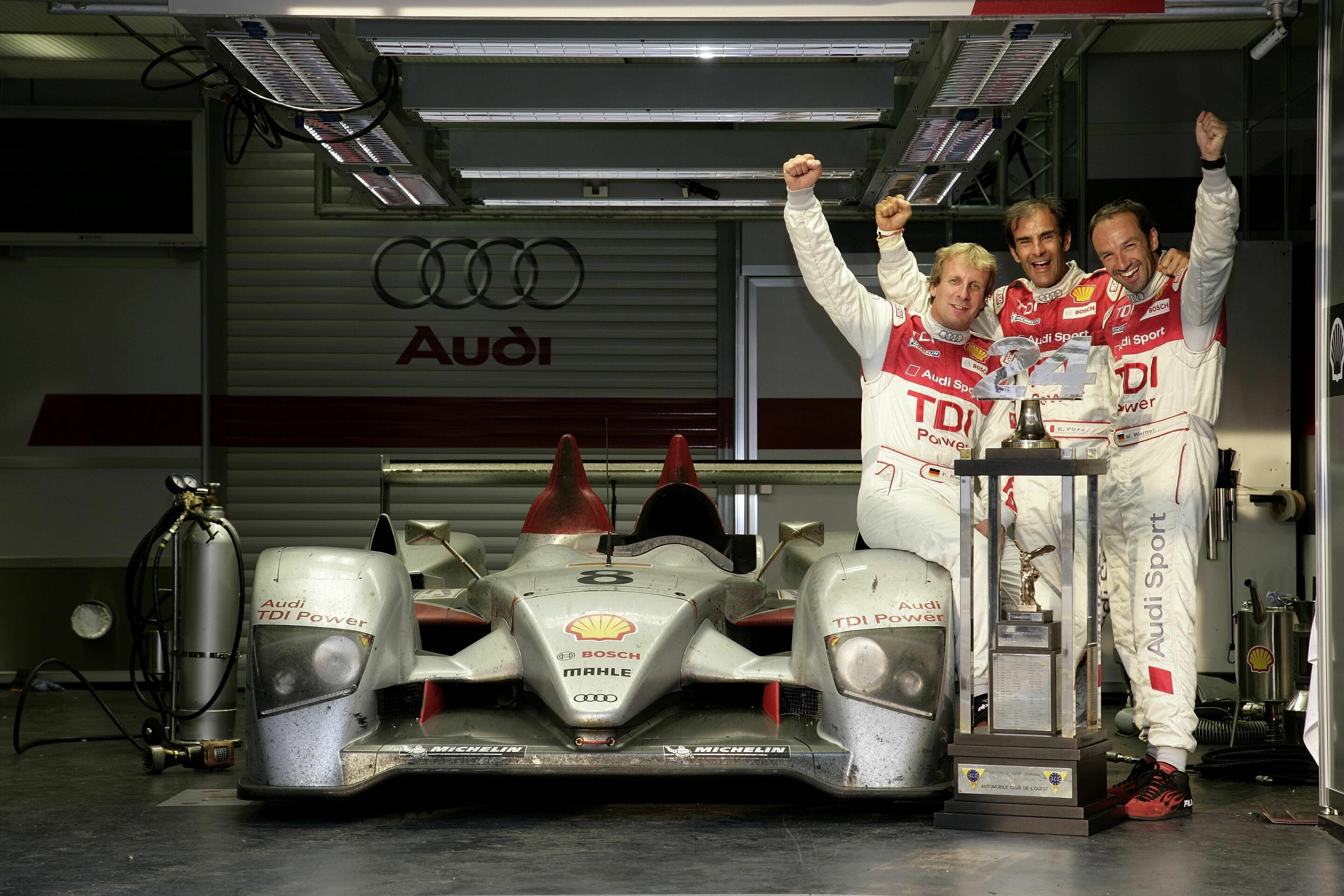Facts about Audi’s historical Le Mans victory
- First victory for a diesel engine at Le Mans
- New distance record for the current circuit layout
- Up to 16 laps with a tank of Shell V-Power Diesel
“Veni, Vidi, TDI.” “Super Diesel.” “New motorsport era.” The first triumph for a diesel engine at the legendary 24 Hours of Le Mans dominated newspaper headlines worldwide. By winning with the new Audi R10 TDI on its Le Mans début, AUDI AG has opened an important new chapter in motorsport history.
Facts and figures concerning the victory at Le Mans:
It was the 74th running of the race, which was held for the first time in 1923.
The race winning car with the number 8 completed 380 laps in the 24 hours – one lap more than the previous record set in 2004 around the current circuit layout.
380 laps is the equivalent of 5,187 kilometres or almost the entire distance of every Formula 1 race in a season.
Including qualifying, warm-up and the information laps before the race the engine in the winning car reeled off 469 laps (6,402 kilometres) during the Le Mans week – an impressive proof of the reliability of the new power plant, which has an aluminium cylinder block.
The winning car’s average speed over the entire distance was 215.409 kph.
Thanks to the economical Audi V12 TDI engine, the Audi drivers only had to pit for refuelling once every 14 laps. The winning car used only approximately 41 litres of Shell V-Power Diesel per 100 kilometres – for a race engine producing more than 650 hp and more than 1100 Newton metre torque and extremely low figure.
In the closing laps of the race the Audi drivers even completed as many as 16 laps on a single tank of fuel. Tom Kristensen was the first driver to achieve this.
The V12 TDI engine’s gear-shift rev threshold is at the unusually low level of 5000 revolutions per minute for a race engine.
The winning car made only 27 pit stops during the 24:04:47.325 hours. The car only made two unscheduled pit stops: once to change the gear-cluster in the gearbox (03:47 a.m.), and once due to a slow puncture (04:23 a.m.).
Thanks to Audi Sport’s revolutionary new gearbox concept the gear-cluster change required a mere 9:50 minutes – including refuelling and change of tyres.
The triumphant Audi R10 TDI with the number 8 spent less than 30 minutes in the pits during the entire race.
The triumphant Audi R10 TDI has the chassis number 102. It is the same car with which Frank Biela, Emanuele Pirro and Marco Werner started the 12-hour race at Sebring in March.
Tom Kristensen set the fastest race lap in the fifth hour (lap 65) in 3m 31.211s. This represents an average speed of 232.658 kph. As a result he came within less than a second of the fastest time from qualifying.
Dindo Capello secured pole position with a time of 3m 30.466s (average speed 233.482 kph). This was the third pole position at Le Mans for the Italian.
Exactly 200 days lay between the roll-out of the new Audi R10 TDI on 29 November at Misano (Italy) and the start of the race at Le Mans.
Audi Sport completed 30,000 test kilometres with the R10 TDI before the start at Le Mans. The V12 TDI ran for an additional 1,500 hours on the engine dynamometers.
The responsible team members, including Head of Motorsport Dr Wolfgang Ullrich stood awake for the entire duration of the race. When the cars crossed the finish line of Sunday at 17:00 they had already been awake for 34 hours.
97 employees were in action for Audi Sport Team Joest during the race at Le Mans.
Audi lies in fourth place in the all-time best list with six victories from only eight Le Mans starts.
Reinhold Joest’s team celebrated its eighth win and is, as a result, the most successful in the history of the Le Mans 24 Hours.
For Frank Biela and Emanuele Pirro it was the fourth victory at Le Mans. Only Tom Kristensen (seven), Jacky Ickx (six) and Derek Bell (five) have more wins. It was the second successive Le Mans win for Marco Werner.
A car with start number 8 only won for the fourth time in Le Mans.
